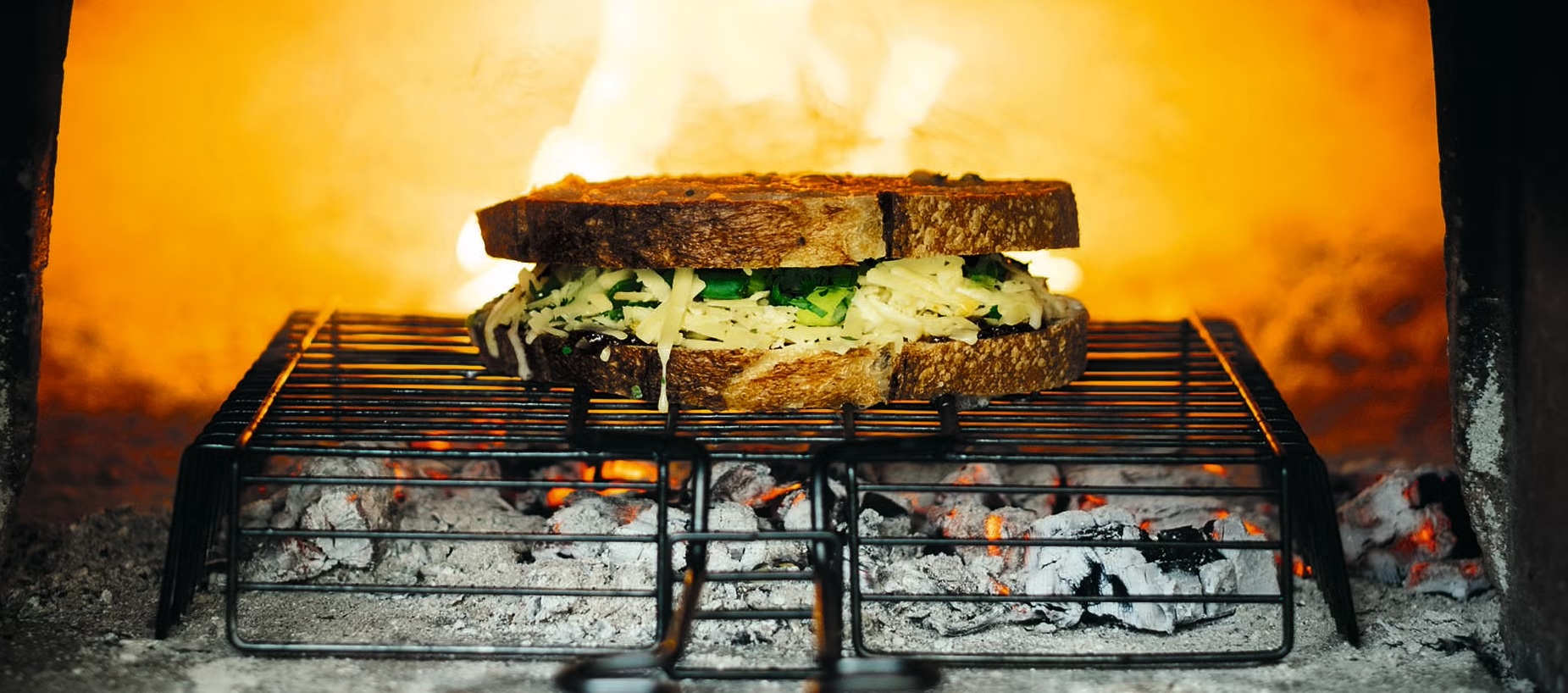
Mastering Wood-Fired Cooking: Flavors, Tips & Techniques
What's in This Article
Wood-fired cooking has transcended its historical roots to become a celebrated culinary art form, offering unique flavors and cooking methods that elevate dishes to new heights. From traditional wood-fired ovens that have existed for centuries to modern grills and smokers designed with innovative technology, chefs and home cooks alike are rediscovering the transformative magic of wood in the kitchen. This renaissance isn't just about nostalgia—it's about the unmatched flavor profiles that simply cannot be replicated with gas or electric cooking methods.
The beauty of wood-fired cooking lies in its versatility and the distinctive character it imparts to food. Fruitwoods such as apple and cherry infuse meats and vegetables with a subtle sweet smokiness that enhances without overwhelming. Meanwhile, hardwoods like hickory and mesquite deliver bold, earthy notes that create depth and complexity in everything from brisket to ribs. This natural flavor infusion happens through a process that combines smoke penetration, caramelization, and the Maillard reaction—the chemical interaction between amino acids and reducing sugars that gives browned food its distinctive flavor.
In this comprehensive guide, we'll delve deeply into the art of smoking—a technique that not only preserves but transforms foods like meats, fish, and even cheese through prolonged exposure to aromatic wood smoke. We'll explore how grilling over wood or a strategic combination of wood and charcoal provides excellent heat control while developing those coveted smoky flavors that make outdoor cooking so irresistible. Whether you're a barbecue enthusiast or simply looking to expand your culinary repertoire, this journey through wood-fired cooking will equip you with the knowledge and techniques to create memorable meals that showcase the timeless partnership between fire, wood, and food.
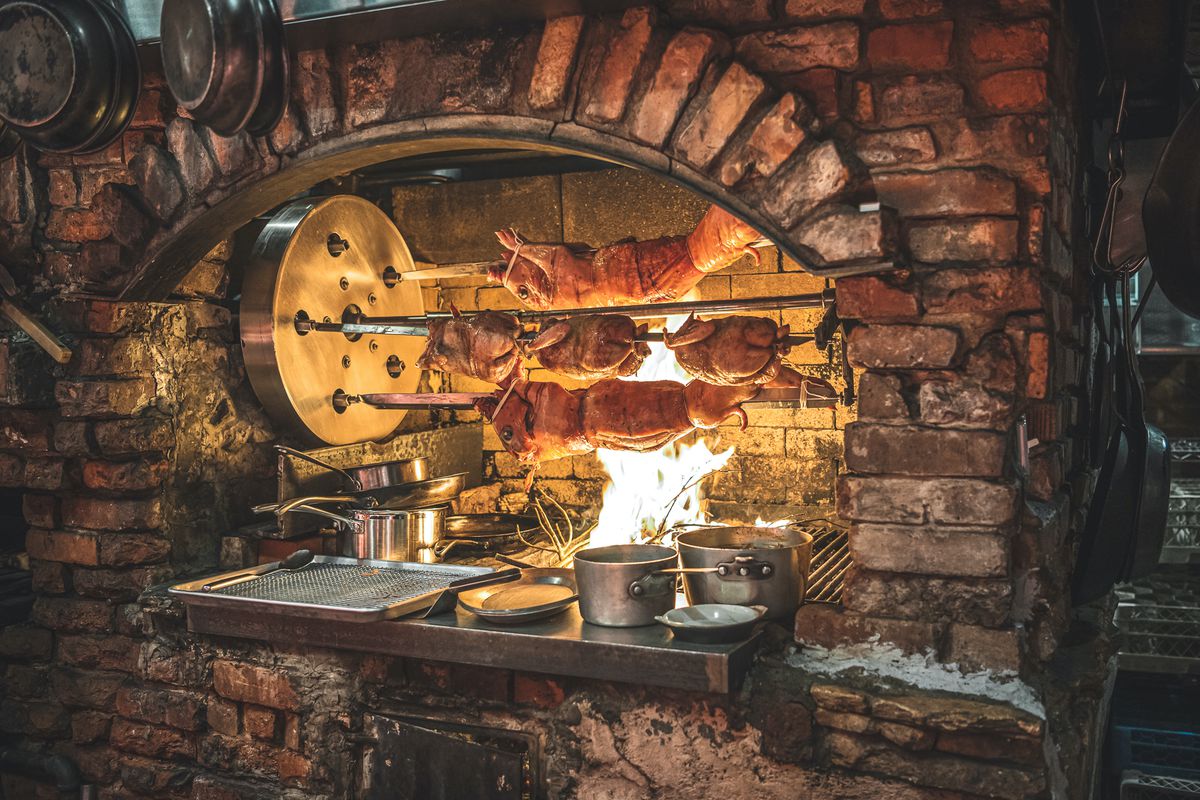
The magic of wood-fired cooking brings unmatched flavors and textures to your dishes
The Art of Wood-Fired Cooking
Wood-fired cooking represents more than just a cooking method; it's an immersive sensory experience that connects us to traditional culinary practices dating back thousands of years. Long before the convenience of electric ovens and gas grills, our ancestors harnessed the power of fire and wood to transform raw ingredients into nourishing, flavorful meals. This ancient technique has persisted through generations not merely for practical reasons, but because it imparts a distinctive character to food that modern methods simply cannot replicate.
At the heart of wood-fired cooking's appeal is the complex interplay between heat, smoke, and food. Unlike the consistent, controlled heat of modern appliances, wood fire is dynamic and responsive. It creates temperature zones that allow for different cooking techniques simultaneously—searing over direct flames while slow-cooking in the ambient heat. This versatility enables chefs to develop layers of flavor and achieve varying textures within a single cooking session.
The choice of wood types plays a critical role in the flavors imparted to the food, functioning almost like a seasoning ingredient in its own right. Different woods release distinctive aromatic compounds when burned, which interact with food on a molecular level. Fruitwoods like apple and cherry are prized for their sweet, mild smoke profile, making them ideal companions for poultry and pork. Their subtle character enhances the meat's natural flavors without overpowering them, creating a harmonious balance that's immediately recognizable to the discerning palate.
On the other hand, hardwoods such as hickory and mesquite offer a stronger, more robust flavor profile that stands up beautifully to red meats and game. The intensity of these woods creates a pronounced smoky character that penetrates deeply into the meat, resulting in that quintessential barbecue experience celebrated in renowned BBQ establishments across the country. Understanding these nuances allows chefs to tailor their dishes to specific flavor profiles, enhancing the overall dining experience through thoughtful wood selection.
Choosing the Right Wood Types
Selecting the appropriate wood type is perhaps the most crucial decision in wood-fired cooking, as it fundamentally shapes the character of your finished dish. Each variety of wood brings its own distinctive aromatic compounds and burning properties to the cooking process. Making informed choices about wood selection allows you to craft a specific flavor profile that complements your ingredients rather than competing with them.
Applewood stands out for its subtle, fruity sweetness that develops into a mild, slightly sweet smoke. This gentle profile makes it exceptionally versatile, particularly well-suited for smoking chicken, turkey, and pork products where you want to enhance rather than mask the meat's natural flavors. Many pitmasters consider apple the perfect 'beginner's wood' because it's forgiving and rarely overpowering, even when used generously.
Cherry wood offers a similar sweetness but with a richer, more distinct fruity aroma that creates a beautiful mahogany color on the food's exterior. This wood pairs wonderfully with duck, game birds, and even vegetables, imparting a complex sweetness that develops beautifully during long cooking sessions. When combined with other woods like oak for heat maintenance, cherry creates a sophisticated flavor profile that's become a signature in many high-end restaurants specializing in wood-fired cuisine.
For those seeking bold, distinctive flavor, hickory provides a strong, bacon-like smokiness that has become synonymous with traditional American barbecue. Its pronounced character works magnificently with beef brisket, pork shoulders, and ribs—cuts that can stand up to its intensity during long smoking sessions. Hickory's robust profile makes it ideal for creating that deeply satisfying bark on smoked meats that enthusiasts prize, though beginners should use it judiciously to avoid overwhelming more delicate ingredients.
Mesquite represents perhaps the most intense option commonly available, delivering an earthy, almost sweet yet strongly aromatic smoke that's immediately recognizable. Native to the American Southwest, mesquite burns hot and fast, making it excellent for high-temperature grilling of steaks and burgers where you want to impart maximum flavor during a relatively short cooking time. Its intense character can become bitter during extended cooking, so it's often used sparingly or mixed with milder woods for balance in longer sessions.
Beyond these common options, adventurous cooks might explore specialty woods like pecan (offering a milder alternative to hickory with subtle sweetness), maple (imparting a mild, slightly sweet smoke perfect for poultry and ham), or even grapevine cuttings (delivering an intense, winey character ideal for Mediterranean-inspired dishes). Experimenting with different wood types—and even combinations of complementary woods—can lead to exciting flavor discoveries and signature dishes that showcase your personal culinary style.

Wood chips and chunks offer different burning properties and flavor intensities
Mastering Heat Control
Heat control represents the technical mastery required for successful wood-fired cooking, influencing everything from cooking time to moisture retention, smoke absorption, and ultimately, the flavor development in your finished dish. Unlike gas or electric cooking where temperature adjustment happens at the turn of a dial, wood fire requires a fundamental understanding of fire behavior and active management throughout the cooking process.
The first principle of heat control in wood-fired cooking involves understanding the relationship between oxygen, fuel, and heat—the fire triangle. More oxygen creates a hotter, faster-burning fire, while restricting airflow slows combustion and lowers temperature. Most wood-fired cooking appliances feature adjustable vents or dampers that allow you to regulate airflow precisely, giving you remarkable control over your cooking environment once you develop the necessary skills through practice and observation.
Creating and maintaining distinct temperature zones represents another critical aspect of heat management. In a traditional wood-fired oven or grill, you'll naturally have hot spots near the active flame and cooler areas farther away. Rather than viewing this variation as a disadvantage, skilled practitioners leverage these temperature gradients strategically. For example, you might sear meat directly over hot embers to develop a flavorful crust, then move it to a cooler zone to finish cooking gently without burning. This multi-zone approach allows for remarkable versatility within a single cooking vessel.
Wood selection also plays a significant role in temperature management. Hardwoods like oak and hickory burn longer and hotter than softwoods, maintaining consistent temperatures for extended cooking sessions. Dense fruitwoods like apple and cherry offer moderate heat with excellent flavor. Understanding these burning characteristics allows you to choose the right wood for your specific cooking needs—whether that's the intense heat needed for wood-fired pizza or the gentle, sustained warmth required for smoking delicate fish.
The strategic combination of wood and charcoal represents one of the most effective approaches for precise heat control, particularly for beginners. Charcoal provides a stable, predictable heat source, while added wood chunks or chips contribute aromatic smoke. This hybrid method offers the best of both worlds—the temperature reliability of charcoal with the flavor benefits of wood—making it an excellent gateway technique for those new to wood-fired cooking.
Ultimately, mastering heat control requires developing an intuitive understanding of fire behavior through observation and experience. The ability to read visual cues like flame color and size, ember glow, and smoke characteristics allows accomplished cooks to make subtle adjustments throughout the cooking process. This dynamic relationship between cook and fire represents one of the most rewarding aspects of wood-fired cooking—a skill developed through patience and practice that transforms cooking from a mere task into a contemplative craft.

Mastering heat control is essential for perfect wood-fired cooking results
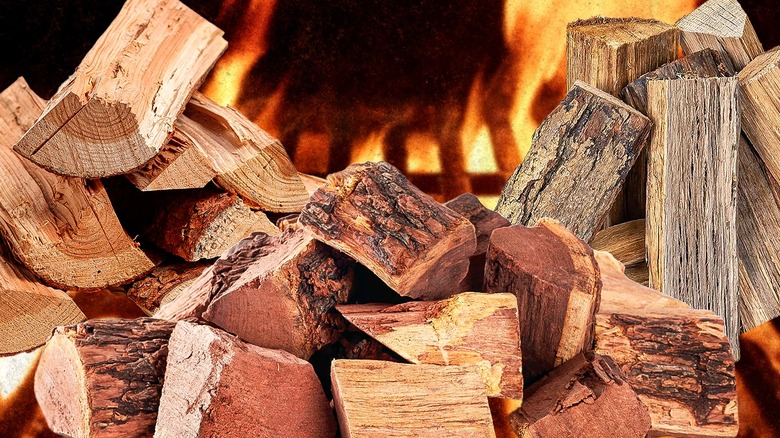
Different wood types create distinctive flavor profiles in your dishes
Exploring Smoking Techniques
Smoking represents perhaps the most revered technique in the wood-fired cooking tradition, distinguished by its ability to both preserve food and develop complex flavor profiles through prolonged exposure to aromatic wood smoke. This ancient preservation method has evolved into a sophisticated culinary approach that creates some of the most distinctive and beloved dishes in global cuisine, from Texas brisket to Scandinavian smoked salmon.
The fundamental process involves exposing food to smoke generated from smoldering wood, allowing volatile compounds in the smoke to interact with the food's surface. These compounds—including phenols, carbonyls, and organic acids—create the characteristic smoky flavor while simultaneously inhibiting bacterial growth and oxidation. This dual function explains why smoking became such an important preservation technique historically, though today we primarily value it for its unparalleled flavor development.
Modern smoking approaches can be categorized along several important dimensions, creating a diverse spectrum of techniques suitable for different ingredients and desired outcomes. Temperature represents the most significant variable, with methods ranging from cold smoking at temperatures below 90°F to hot smoking at temperatures up to 275°F. The smoke density, exposure time, and humidity levels within the smoking environment also dramatically impact the finished product.
The equipment used for smoking has diversified enormously in recent years, ranging from traditional smoking chambers and repurposed barrels to sophisticated digital smokers with precise temperature controls. This technological evolution has made smoking more accessible to home cooks, allowing novices to achieve consistent results while still offering the depth and authenticity that smoking enthusiasts prize. The smoke generator itself may utilize various approaches, from traditional wood chunks or chips to specialized pellets, sawdust, or even liquid smoke products for certain applications.
Different smoking methods yield dramatically different results when applied to the same ingredient. For example, salmon treated with a traditional cold smoke process develops a silky texture and subtle flavor penetration, while hot-smoked salmon offers a flakier texture with more pronounced smoke character throughout. Understanding these different approaches allows cooks to match the smoking technique to their specific culinary vision, creating everything from delicately smoked cheese to intensely flavored barbecue ribs with the same fundamental process.
Cold Smoking vs. Hot Smoking
Cold smoking and hot smoking represent two fundamentally different approaches within the smoking spectrum, each producing distinctive results through contrasting temperature ranges and processing times. Understanding the key differences between these techniques allows cooks to select the appropriate method for specific ingredients and desired outcomes, dramatically expanding their culinary repertoire.
Cold smoking operates at temperatures below 90°F (32°C), focusing on flavor infusion without cooking the food. This temperature range allows smoke particles to adhere to and penetrate the food's surface while avoiding the protein coagulation and fat rendering that occur at higher temperatures. The result is a product that maintains its raw characteristics while developing complex smoky notes. This gentle approach requires extended exposure times—often between 12-48 hours—to achieve the desired flavor intensity.
This method proves ideal for delicate items like cheese, which can absorb the smoky aroma without structural changes that would occur at higher temperatures. Cold-smoked salmon, a traditional delicacy in Northern European cuisine, develops its characteristic silky texture and complex flavor through this method. Other excellent candidates include nuts, salt, garlic, and certain vegetables, which benefit from smoke flavor without cooking. The extended time requirement and temperature sensitivity make cold smoking more technically challenging, often requiring specialized equipment to maintain consistently low temperatures.
Hot smoking, in contrast, simultaneously cooks and flavors food at temperatures typically ranging from 180°F to 250°F (82°C to 121°C). This dual function makes hot smoking particularly suited for proteins like brisket, ribs, poultry, and pork shoulder, which benefit from the slow breakdown of collagen and fat during extended cooking. The higher temperatures create important chemical reactions, including caramelization and the Maillard reaction, which develop additional flavor compounds beyond those contributed by the smoke itself.
The cooking effect of hot smoking transforms raw ingredients into fully prepared dishes. Meats become tender as tough connective tissues convert to gelatin, while the moderate heat ensures moisture retention when properly executed. Hot smoking times vary widely based on the product—from as little as 30 minutes for delicate seafood to 12+ hours for large cuts like brisket or pork shoulder. The technique proves more forgiving for beginners, as the higher temperatures provide greater flexibility in timing and equipment options.
Many sophisticated smoking approaches actually incorporate both methods sequentially. For example, some bacon production begins with a cold smoke process to develop flavor, followed by a hot smoking phase to partially cook and further develop the meat's texture. This combinatorial approach showcases how understanding both techniques allows for creative applications that maximize the benefits of each method while crafting products with precisely targeted characteristics.
Using Electric Smokers
Electric smokers have revolutionized the smoking process, democratizing this once-specialized technique by offering unprecedented control, consistency, and convenience. These modern appliances have transformed smoking from an art requiring years of experience into an accessible cooking method that even beginners can master relatively quickly. While purists might debate their authenticity compared to traditional methods, electric smokers undeniably produce excellent results while eliminating many of the technical barriers that previously limited smoking to dedicated enthusiasts.
The defining feature of electric smokers is their precise temperature regulation, typically controlled through digital interfaces that maintain cooking environments within 5-10 degrees of the target temperature. This precision eliminates one of the most challenging aspects of traditional smoking—the constant monitoring and adjustment of combustion to maintain temperature. With electric smokers, users simply set the desired temperature and the unit handles the regulatory work, allowing for more consistent results and freeing the cook to focus on other aspects of food preparation.
Modern electric smokers offer versatility that spans both hot and cold smoking techniques. Many units can maintain temperatures from as low as 100°F for cold smoking applications to 275°F+ for traditional hot smoking. This range enables experimentation with different smoking approaches without requiring separate specialized equipment for each technique. The precise control also allows for more repeatable results—once you've perfected a particular recipe, you can reliably reproduce it by using the same settings.
Wood chips, chunks, or pellets still provide the flavor in electric smokers, typically loaded into dedicated drawers or trays where they smolder from the heat of an electric element. This separation of the heat source from the smoke generation allows for clean, efficient smoke production without the risk of flare-ups or combustion issues. Many units feature systems that allow for adding wood without opening the main chamber, maintaining temperature stability throughout longer cooking sessions.
Advanced features in premium electric smokers include programmable cooking cycles, remote monitoring via smartphone apps, automatic wood chip feeders, and integrated meat probes that can trigger temperature adjustments based on the food's internal temperature. These technological enhancements further simplify the smoking process while providing valuable feedback that helps users develop their skills more rapidly than traditional trial-and-error approaches.
For beginners, electric smokers provide an ideal entry point into smoking techniques. Their user-friendly interfaces eliminate guesswork while still delivering authentic smoky flavors. The reduction in required attention also makes electric smokers practical for busy home cooks who can't dedicate hours to continuously monitoring a traditional smoker. While experienced pitmasters might prefer the hands-on connection and subtle variability of traditional methods, electric smokers offer a practical solution that brings sophisticated smoking techniques within reach of casual cooks seeking to expand their culinary horizons.

Electric smokers provide precision and convenience for both novice and experienced cooks
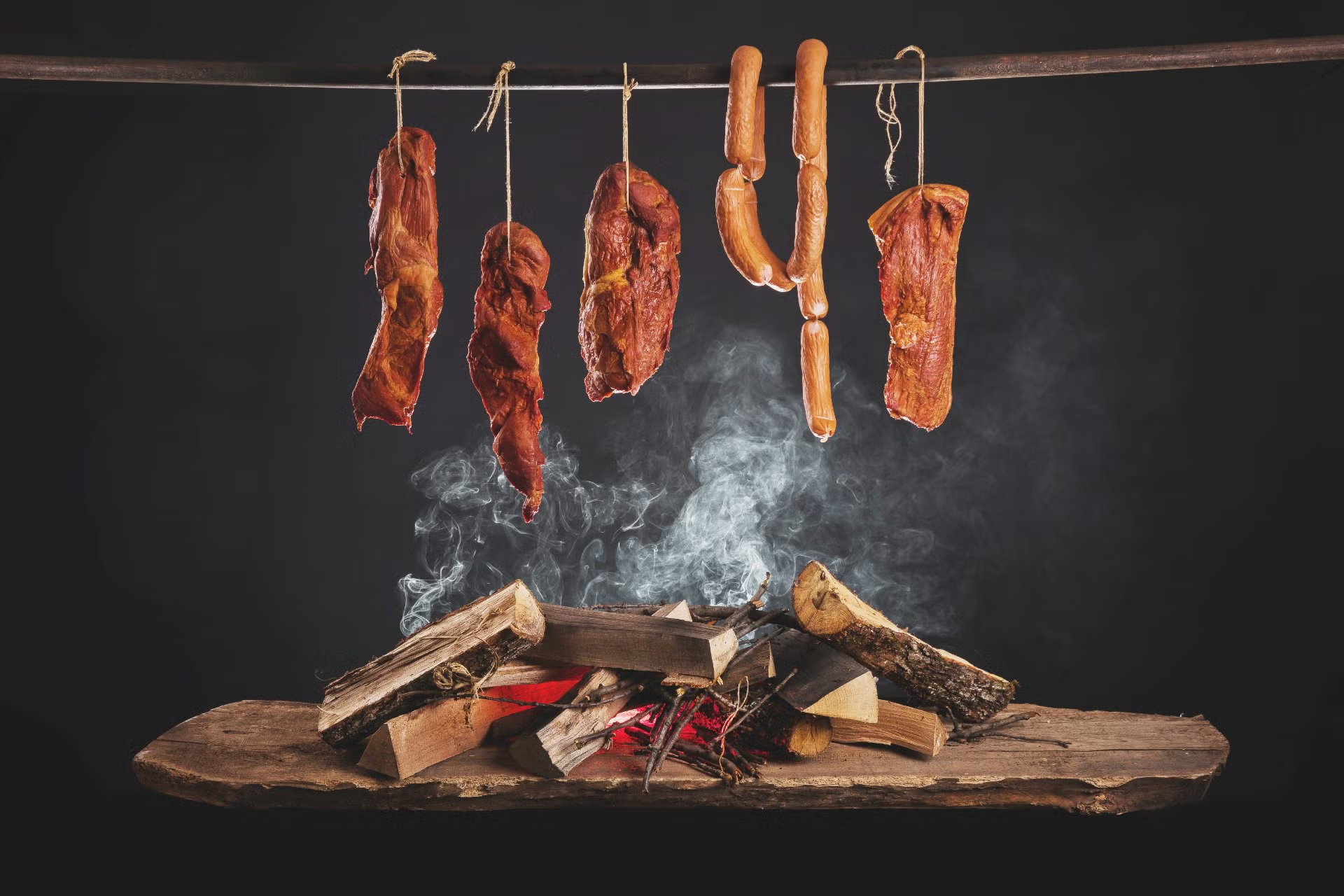
Smoking techniques range from traditional to modern, each offering unique benefits
Grilling Over Wood and Charcoal
Grilling over a combination of wood and charcoal represents a hybrid approach that many professionals consider the ideal compromise between convenience and flavor, offering cooks the best attributes of both fuel sources. This method has deep historical roots—long before commercial charcoal briquettes existed, cooks would allow wood to burn down to embers before cooking over the resulting coals, effectively creating a two-stage fuel system naturally.
The complementary properties of these materials create a cooking environment that's greater than the sum of its parts. Charcoal, whether in the form of manufactured briquettes or natural lump charcoal, provides a stable, long-lasting heat source with relatively neutral flavor. It creates the consistent cooking platform necessary for precise temperature control and even cooking. Wood, meanwhile, contributes those complex aromatic compounds that develop the distinctive smoky character prized in grilled foods. Together, they form a partnership that addresses the limitations of each material used individually.
This combination approach proves particularly valuable for longer grilling sessions where maintaining consistent temperature is crucial. Unlike cooking exclusively with wood, which requires constant attention and frequent additions of new fuel, a charcoal base provides sustained heat while strategically added wood chunks or chips contribute flavor in controlled amounts. This allows the cook to focus on food preparation and timing rather than fire management, particularly beneficial when preparing multiple dishes simultaneously for gatherings.
The versatility of wood-charcoal combination grilling makes it suitable for a remarkable range of foods. From quick-cooking items like steaks, burgers, and seafood that benefit from high heat and a kiss of smoke to longer-cooking vegetables and larger cuts that develop flavor through extended exposure, this hybrid approach accommodates diverse cooking needs. The ability to create distinct temperature zones—establishing hot areas for searing and cooler regions for gentle cooking—further expands the technique's applications.
At innovative restaurants across the country, chefs are reinventing traditional grilling by combining various charcoal types with carefully selected wood varieties to create signature flavor profiles. Oak charcoal paired with apple wood chunks might be used for seafood, while mesquite charcoal with hickory additions might be reserved for red meats. These thoughtful combinations reflect growing sophistication in outdoor cooking, elevating backyard grilling from casual cookouts to refined culinary experiences worthy of the finest dining establishments.
Benefits of Wood and Charcoal
The strategic combination of wood and charcoal offers several distinct advantages that make it the preferred approach for many experienced grill masters. This hybrid method addresses the limitations of each fuel used independently while maximizing their respective strengths, creating an optimal cooking environment for a wide range of dishes.
Temperature stability represents perhaps the most significant benefit of this combined approach. Charcoal, particularly high-quality lump charcoal, provides a consistent heat source that maintains cooking temperatures with minimal fluctuation. This steady thermal platform allows for precise cooking times and predictable results, especially important when preparing items that require specific doneness levels. The addition of wood introduces flavor without disrupting this stability, as the smaller amounts of wood used primarily for smoke production don't significantly impact the overall temperature profile established by the charcoal base.
The flavor development achieved through this combination is unparalleled. Charcoal itself contributes subtle mineral notes and enhances caramelization, while the wood adds layered aromatic compounds that penetrate the food during cooking. This dual flavor development creates remarkable complexity in relatively simple dishes—even basic items like grilled chicken take on new dimensions when prepared over this combination. The ability to select specific wood types further allows for customized flavor profiles tailored to particular ingredients.
For meats specifically, this combination creates ideal conditions for that perfect balance between exterior development and interior cooking. The consistent heat from charcoal ensures even cooking throughout larger cuts, while the intermittent smoke from wood chunks contributes to the formation of the coveted 'bark' or crust on the exterior. This textural contrast—a well-developed, flavorful exterior surrounding a juicy, perfectly cooked interior—represents the hallmark of exceptional grilled meats.
From a practical perspective, the wood-charcoal combination offers superior fuel efficiency and session longevity. Quality charcoal can maintain cooking temperatures for hours with minimal attention, while small additions of wood provide continuous flavor. This efficiency proves particularly valuable for longer cooking sessions, such as weekend gatherings where the grill might be active for extended periods. The reduced need for constant fuel management allows the cook to focus on food preparation and presentation rather than fire tending.
Finally, this approach offers remarkable versatility across different cooking styles and equipment types. From kettle grills and kamado-style ceramic cookers to offset smokers and Santa Maria-style setups, the wood-charcoal combination can be adapted to virtually any outdoor cooking apparatus. This adaptability makes it an excellent technique to master, as the principles remain consistent even as cooks upgrade or expand their equipment collection over time.
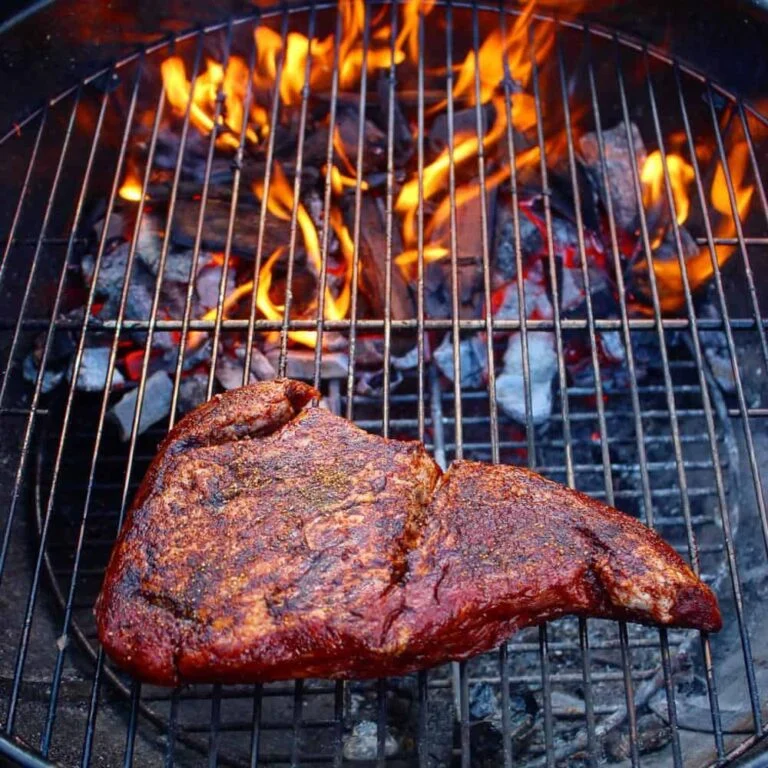
Strategic placement of wood and charcoal provides consistent heat and smoky flavor
Tips for Perfect Grilling
Achieving perfect results when grilling over wood and charcoal requires attention to detail and mastery of several key techniques. While the combination of these fuels creates an ideal cooking environment, proper execution remains essential for transforming raw ingredients into exceptional grilled dishes. These practical tips, refined through generations of grilling expertise, will help elevate your outdoor cooking to restaurant quality.
Proper preparation begins well before lighting the fire. Quality ingredients selected with grilling in mind form the foundation of successful outdoor cooking. For meats, choose cuts with appropriate fat content for your specific grilling method—marbled steaks for direct high-heat cooking, fattier cuts like pork shoulder for lower, slower approaches. Bringing ingredients to room temperature before grilling ensures more even cooking, particularly important for thicker cuts that might otherwise remain cool in the center while the exterior overcooks.
Fire management represents the technical heart of successful grilling. Begin by establishing a proper charcoal base, allowing it to burn until the briquettes or lump charcoal develop a light gray ash coating—typically 20-30 minutes after lighting. This indication of optimal temperature eliminates the harsh initial chemicals from combustion while providing stable heat. Add wood chunks or chips strategically during cooking rather than all at once—this creates waves of fresh smoke that continuously flavor the food without producing bitter compounds from over-burning.
Creating distinct temperature zones transforms your grill from a one-dimensional cooking surface into a versatile culinary tool. The classic two-zone setup—with charcoal concentrated on one side creating an intense heat zone while leaving the other side cooler—allows for both searing and gentle cooking within the same grill. This arrangement proves invaluable for managing flare-ups (by moving food temporarily to the cooler zone) and for finishing thicker cuts (by searing over high heat before completing cooking in the moderate zone). More advanced setups might include three or more zones for maximum versatility during complex grilling sessions.
Grill marks—those coveted crosshatch patterns that signal professional-quality presentation—result from proper technique rather than equipment quality. The secret lies in patience and discipline: place the food on the hot grill and resist the urge to move or adjust it until it releases naturally from the grate, typically 3-4 minutes for meats. Rotate the food 45 degrees without flipping to create the perpendicular marks, then allow it to cook further before flipping just once to repeat the process on the other side. This minimalist handling preserves moisture while developing the caramelized exterior that contributes significantly to flavor development.
Temperature monitoring represents an often-overlooked aspect of precision grilling. While experienced grill masters might rely on touch and visual cues, a quality instant-read digital thermometer eliminates guesswork and ensures consistent results, particularly important when cooking for guests with specific doneness preferences. For larger cuts, leave-in probe thermometers allow for continuous monitoring without repeatedly opening the grill, maintaining temperature stability throughout the cooking process. Understanding target temperatures for different meats and levels of doneness transforms grilling from intuitive approximation to reliable precision.
Finally, the resting period after grilling proves as crucial as the cooking itself. Allowing meats to rest for approximately one-third of their total cooking time permits the redistribution of internal juices, resulting in dramatically improved texture and moisture retention. This patience—however difficult when faced with beautifully grilled food—makes the difference between good and exceptional results. A loosely tented foil covering maintains warmth without creating steam that might soften crisp exteriors, preserving that perfect contrast between surface and interior that defines masterful grilling.
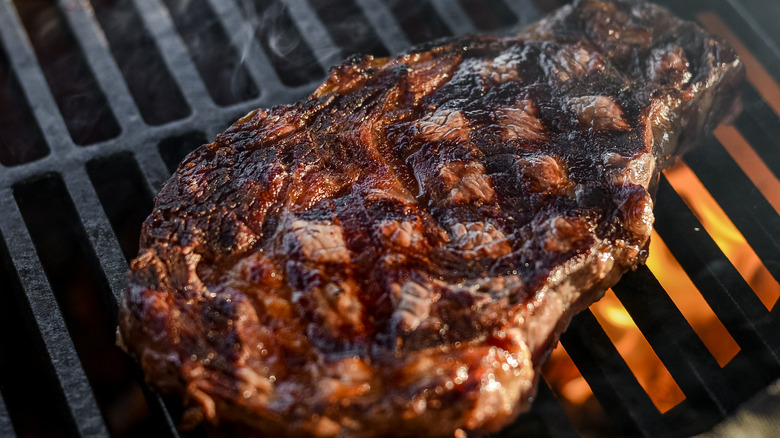
Proper technique delivers those coveted restaurant-quality grill marks

The combination of wood and charcoal creates the perfect environment for grilling meats
Getting Started at Home
Incorporating wood-fired cooking techniques into your home culinary repertoire doesn't require expensive professional equipment or extensive outdoor space. With the right approach and a willingness to experiment, even beginners can unlock the distinctive flavors and techniques that make wood-fired cooking so appealing. This accessible entry point allows enthusiasts to gradually build their skills before potentially investing in more specialized equipment.
For those new to wood-fired cooking, starting with a hybrid approach often proves most successful. A standard charcoal kettle grill—available at reasonable prices and requiring minimal space—can be easily adapted for wood-enhanced cooking by adding wood chunks or chips to the charcoal base. This simple modification immediately introduces authentic smoky flavors while maintaining the familiar control and convenience of conventional grilling. It also provides an excellent platform for experimenting with different wood types to discover personal preferences without significant investment.
Smoker boxes represent another affordable gateway into wood-fired techniques, particularly for those who already own gas grills. These simple metal containers hold wood chips while allowing smoke to escape through perforations, essentially converting standard gas grills into basic smoking platforms. While not delivering the full intensity of dedicated smokers, these devices introduce subtle smoke character to foods and familiarize cooks with fundamental smoking principles like moisture control, temperature management, and flavor development.
Those ready to explore more authentic smoking can consider entry-level electric or vertical water smokers, which have become increasingly affordable while offering genuine smoking capabilities. These units require minimal technical knowledge to operate successfully, making them ideal for beginners while still producing excellent results across a range of foods from ribs and brisket to smoked fish and cheese. Their smaller footprint also makes them suitable for apartments with balconies or limited patio spaces.
Digital temperature controllers have revolutionized home smoking, bringing professional-level precision to consumer equipment. These devices monitor cooking chamber temperature and regulate airflow automatically, maintaining consistent conditions throughout extended smoking sessions. This technological assistance removes one of the most challenging aspects of traditional smoking—temperature management—allowing beginners to focus on food preparation and flavor development rather than constant equipment monitoring.
Beyond equipment considerations, success in home wood-fired cooking often depends on starting with forgiving recipes that showcase the technique's strengths. Chicken thighs, pork shoulder, and fatty fish like salmon are particularly well-suited to beginners, as their inherent moisture tolerance provides greater margin for error during the learning process. As confidence grows, enthusiasts can gradually tackle more challenging items like brisket or delicate seafood that require more precise technique and temperature control.
Online communities dedicated to wood-fired cooking offer invaluable support for beginners, providing access to experienced practitioners willing to share advice, troubleshoot problems, and suggest improvements. These communities often organize around specific equipment types or regional cooking styles, creating focused learning environments where newcomers can ask questions without judgment and benefit from the collective wisdom of enthusiasts at all experience levels.
Essential Equipment for Beginners
The journey into wood-fired cooking begins with selecting appropriate equipment that balances authenticity with practicality for the home environment. Rather than immediately investing in expensive specialized devices, beginners should consider versatile options that allow exploration of multiple techniques while developing fundamental skills. This measured approach ensures continued engagement without overwhelming financial commitment or technical complexity.
A quality charcoal kettle grill serves as perhaps the most versatile entry point, functioning not only as a standard grill but also as a rudimentary smoker when properly configured. Models with tight-fitting lids, adjustable vents, and substantial cooking surfaces provide the greatest flexibility. The classic Weber kettle represents the gold standard in this category, offering exceptional temperature control, durability, and the ability to create distinct cooking zones—all essential features for wood-enhanced cooking. This single piece of equipment enables direct grilling, indirect roasting, and basic smoking with simple modifications.
For those specifically interested in smoking, entry-level vertical water smokers offer excellent value and simplified operation. These units feature a water pan that stabilizes temperature and maintains humidity while creating a barrier between the fire and food—all crucial elements for successful smoking. Models from manufacturers like Weber (Smokey Mountain) or Masterbuilt provide reliable performance at reasonable price points, with the added benefit of compact footprints suitable for limited outdoor spaces.
Beyond the primary cooking apparatus, several accessories prove invaluable for wood-fired cooking beginners. A reliable digital thermometer with dual probes allows simultaneous monitoring of both cooking chamber temperature and internal food temperature—information critical for proper cooking, especially during longer smoking sessions. Models offering remote monitoring via smartphone apps prove particularly convenient, eliminating the need for constant visual checks.
Proper fuel management tools also enhance the beginner experience significantly. A chimney starter eliminates the need for lighter fluid when starting charcoal, providing faster ignition while avoiding petroleum flavors. Heavy-duty heat-resistant gloves allow safe adjustment of hot cooking grates and fuel, while long-handled tongs and spatulas keep hands safely away from heat sources during cooking. These basic tools dramatically improve safety and control during the learning process.
Wood selection and preparation equipment completes the essential toolkit. A basic hatchet for splitting larger wood chunks and a storage container that keeps wood dry between uses ensures consistent performance. For those using wood chips, a variety pack containing different hardwood types (apple, hickory, cherry, and mesquite) provides an excellent starting point for exploring different flavor profiles before committing to larger quantities of preferred varieties.
Beginner-Friendly Recipes
The initial foray into wood-fired cooking should focus on recipes that showcase the technique's advantages while providing reasonable margin for error during the learning process. These gateway dishes build confidence through reliable results while developing the fundamental skills that apply to more advanced preparations. Starting with these forgiving yet impressive recipes ensures early success that motivates continued exploration of wood-fired techniques.
Bone-in chicken thighs represent perhaps the ideal starting point for wood-fired cooking beginners. Their inherent fat content provides insulation against overcooking, while their robust flavor stands up beautifully to smoke. A simple preparation—rubbed with equal parts salt, black pepper, and paprika before cooking indirectly at around 300°F with apple or cherry wood—delivers consistently impressive results with minimal technique. The relatively short cooking time (about 45 minutes to reach 175°F internal temperature) also allows for quicker learning cycles compared to larger cuts requiring extended cooking.
Pork shoulder (also called Boston butt) offers another excellent entry point into longer smoking sessions. This forgiving cut contains sufficient internal fat and connective tissue to remain moist even with imperfect temperature control, while its substantial size provides extended practice in maintaining consistent cooking conditions. A basic approach using a simple rub (brown sugar, salt, paprika, and black pepper) and hickory or apple wood at 250°F until reaching an internal temperature of 195-205°F introduces beginners to the fundamental principles of low-and-slow barbecue without the technical challenges of more demanding cuts like brisket.
For those interested in seafood applications, skin-on salmon fillets showcase how quickly wood smoke can transform familiar ingredients. A cedar plank preparation—where the fish cooks on a soaked cedar board placed over medium-high heat—provides a foolproof introduction to wood-flavor infusion. The plank both shields the delicate fish from direct heat and contributes complementary aromatic compounds, while the natural fat in salmon readily accepts smoke flavor during the brief cooking period (typically 12-15 minutes). This technique demonstrates how wood-fired methods can enhance premium ingredients through subtle flavor development rather than overwhelming them.
Vegetables often get overlooked in discussions of wood-fired cooking, yet they benefit tremendously from these techniques and offer an excellent low-pressure entry point. Thick-cut vegetables like zucchini, eggplant, bell peppers, and onions develop remarkable depth when grilled over a wood-enhanced fire, with the brief cooking time and visual doneness indicators reducing technical pressure. A simple preparation—tossed with olive oil, salt, and pepper before grilling over medium-high heat with occasional wood chips added for smoke—showcases how even basic ingredients transform through contact with flame and smoke.
For those eager to attempt wood-fired pizza without investing in a dedicated oven, a cast-iron skillet method offers a surprisingly effective approximation. Preheating the skillet on a standard grill (with wood chunks added for smoke) creates an intensely hot cooking surface, while covering the grill creates an enclosed baking environment. Though not reaching the 900°F temperatures of professional pizza ovens, this approach delivers decidedly superior results to conventional oven baking, with distinctive char patterns and subtle smoke influence that evoke authentic wood-fired characteristics.
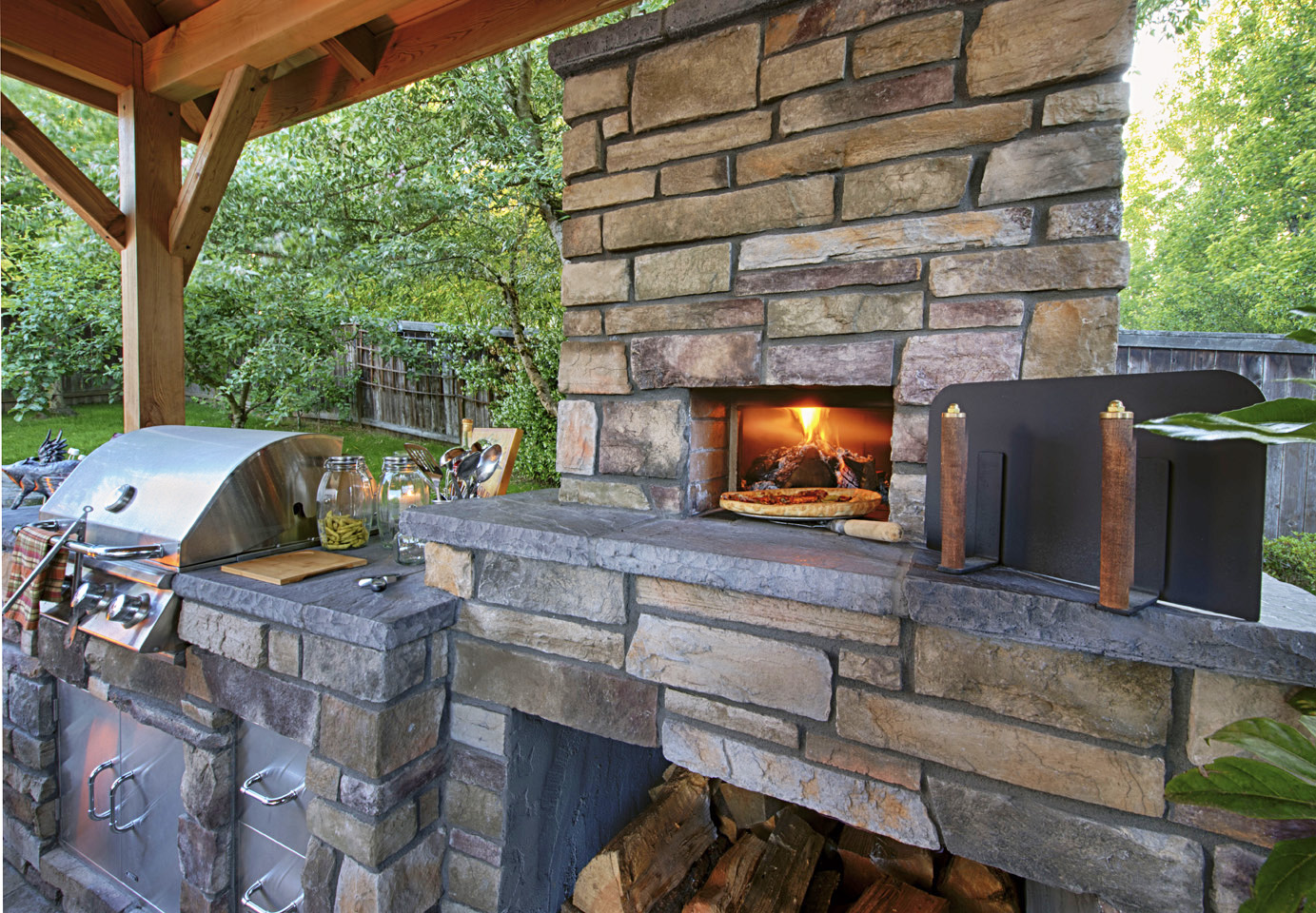
Contemporary home setups make wood-fired cooking accessible to culinary enthusiasts
Embracing the Timeless Art of Wood-Fired Cooking
Wood-fired cooking stands as a testament to the enduring connection between humanity, fire, and food—a relationship that has evolved over millennia yet remains fundamentally unchanged in its ability to transform ingredients and create memorable dining experiences. Throughout this exploration of techniques, equipment, and global traditions, we've seen how the strategic use of wood as both heat source and flavoring agent creates distinctive character impossible to replicate through other cooking methods. This ancient practice, rather than fading into culinary history, continues to inspire innovation while honoring tradition.
The remarkable versatility of wood-fired cooking makes it accessible across experience levels, equipment budgets, and culinary preferences. From the beginner experimenting with wood chips on a standard grill to the dedicated enthusiast investing in specialized equipment, each practitioner can find their appropriate entry point and growth path within this broad tradition. The fundamental techniques—understanding wood selection, managing heat, controlling smoke, and timing cooking processes—provide transferable skills that apply across different equipment types and recipe categories.
Perhaps most significantly, wood-fired cooking connects us to a global community of practitioners spanning cultures and generations. The distinctive flavors of wood-fired foods trigger recognition and appreciation that transcends language barriers and cultural differences. Whether enjoying professionally prepared dishes or creating your own wood-fired specialties, these foods carry an authenticity and sensory richness that resonates on a primal level.
As you begin or continue your journey in wood-fired cooking, remember that this tradition thrives on both respect for fundamental principles and willingness to experiment. The most successful practitioners combine technical precision with creative exploration—understanding why traditional methods work while remaining open to contemporary adaptations. This balance between discipline and creativity represents the philosophical heart of wood-fired cooking.
We encourage you to start where you are, with whatever equipment you have available, and begin incorporating wood-fired elements into your cooking repertoire. Even modest introductions of smoke and flame will noticeably transform familiar dishes, building your confidence and inspiring further exploration. Over time, your personal experience will become your most valuable guide, as you develop the sensory awareness and intuitive understanding that characterizes those who have mastered the timeless art of cooking with wood and fire.
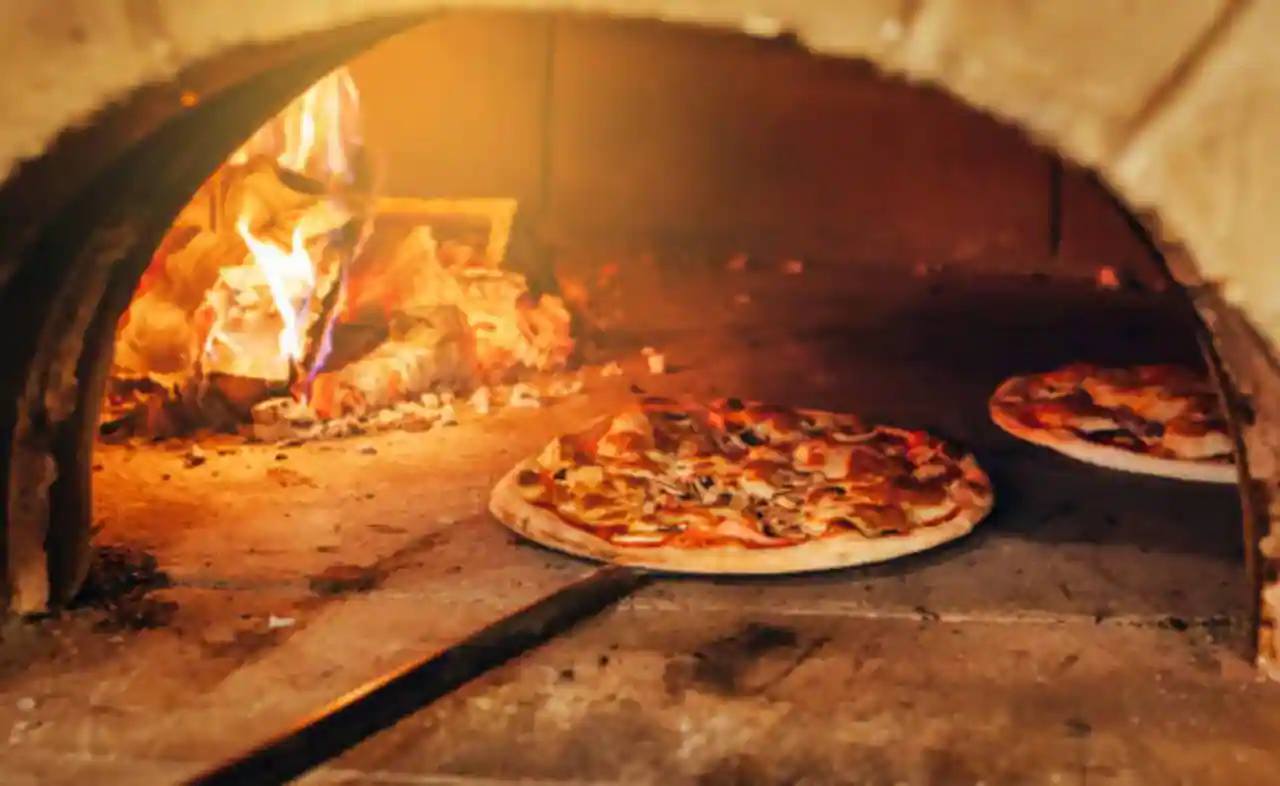
Wood-fired cooking transforms ordinary ingredients into extraordinary culinary experiences
Frequently Asked Questions
Different meats pair well with specific wood types based on their flavor intensity. For poultry and pork, fruitwoods like apple and cherry provide a sweet, mild smoke that enhances without overwhelming. Beef and game meats stand up well to stronger woods like hickory and mesquite, which deliver robust, earthy flavors. Oak offers a middle ground—moderately strong but versatile enough for most meats. For fish and seafood, lighter woods like alder or very small amounts of fruitwood create delicate flavor enhancement. Always consider both the meat's natural flavor intensity and your personal preference when selecting wood.
Temperature control in wood-fired cooking primarily involves managing three variables: fuel amount, airflow, and cooking distance. Increase temperature by adding more fuel or opening air vents to allow greater oxygen flow; decrease temperature by reducing air intake through partially closed vents. Creating distinct temperature zones (hotter near the fire, cooler farther away) allows for simultaneous cooking at different intensities. Using a combination of charcoal (for consistent heat) and wood (for flavor) often provides the most reliable temperature management for beginners. Always use a good digital thermometer to monitor both cooking environment and food internal temperatures for precision.
Begin with equipment that offers versatility while learning. A quality charcoal kettle grill with adjustable vents serves as an excellent starting point, allowing both direct grilling and indirect smoking with the addition of wood chunks or chips. Essential accessories include a chimney starter (for lighting charcoal without lighter fluid), a reliable digital thermometer with dual probes, heat-resistant gloves, and long-handled tools for safety. As your skills develop, you might consider specialized equipment like a vertical water smoker, kamado-style ceramic cooker, or offset smoker, each offering different advantages for specific cooking styles.
The size of wood used in cooking affects both burn time and smoke production. Wood chips are small, thin pieces that ignite quickly and produce immediate smoke but burn out rapidly (10-20 minutes), making them ideal for shorter cooking sessions or when added periodically to maintain smoke. Wood chunks are fist-sized pieces that burn longer (about 1 hour) with moderate smoke output, offering a good balance for most smoking and grilling applications. Logs are used primarily in larger setups like offset smokers and wood-fired ovens, providing both heat and smoke for extended periods. For most home cooking, chips (for gas grills) or chunks (for charcoal setups) offer the most practical options.
Several techniques allow you to incorporate wood-fired flavors using standard home equipment. For gas grills, a smoker box filled with soaked wood chips creates smoke while cooking. On charcoal grills, simply adding wood chunks or chips directly to the coals infuses food with authentic smoke flavor. Indoor options include using a stovetop smoker (essentially a pan with wood chips and a rack) for small items, or incorporating smoke-adjacent flavors through ingredients like smoked salt, smoked paprika, or liquid smoke products. While these alternatives don't perfectly replicate dedicated wood-fired equipment, they provide accessible entry points for exploring these distinctive flavors in conventional cooking setups.